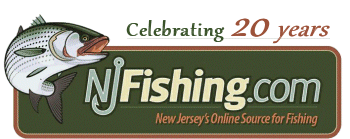 |

|
Message Board
 |

|
 |  | |
 |  | |
 |  | |
 | ||
|
|||||||
| NJFishing.com Fresh Water Fishing Post all your fresh water topics on this board |
|
|
Thread Tools | Display Modes |
|
#1
|
||||
|
||||
|
Lake Hopatcong Commission and Foundation
is interested in stocking Grass Carp in Lake Hopatcong to control the weeds. Currently the regulations only allow lakes less than 10 acres in size and they have to have containment. Lake Hopatcong does not meet either of those requirements. They were advised of that. To allow the stocking of Grass Carp in Lake Hopatcong would require a change of regulations. |
|
|